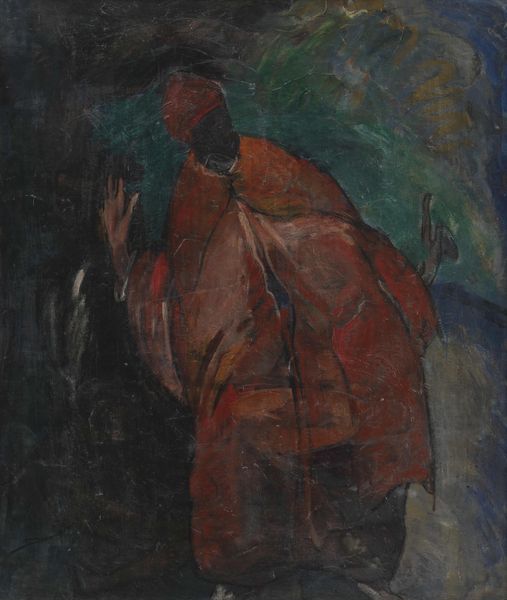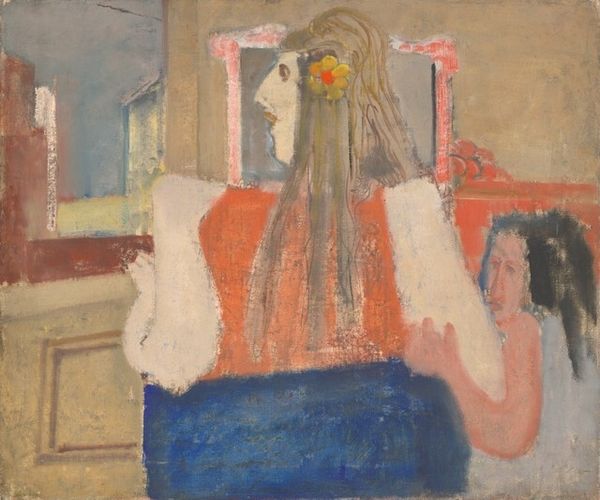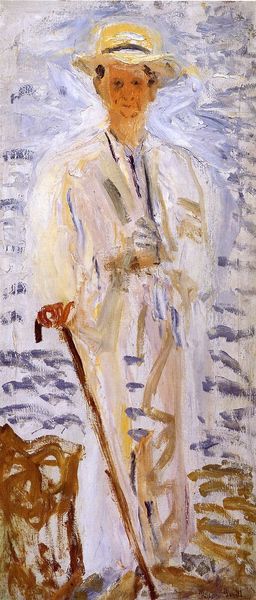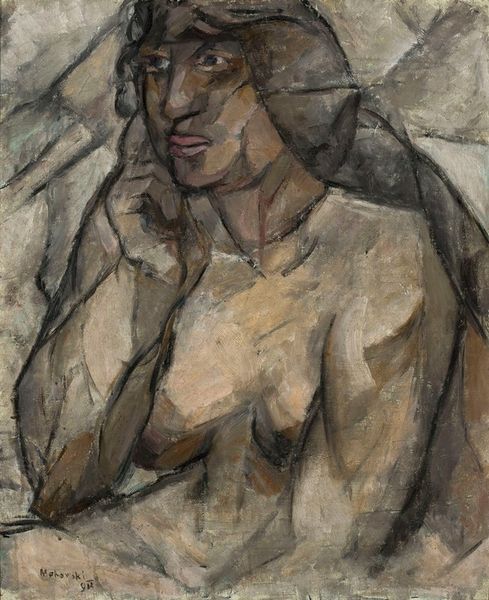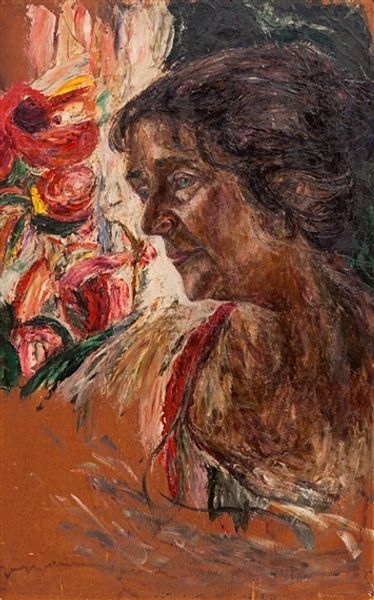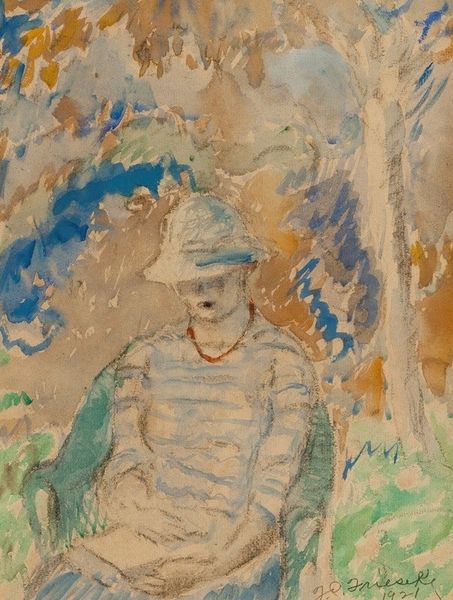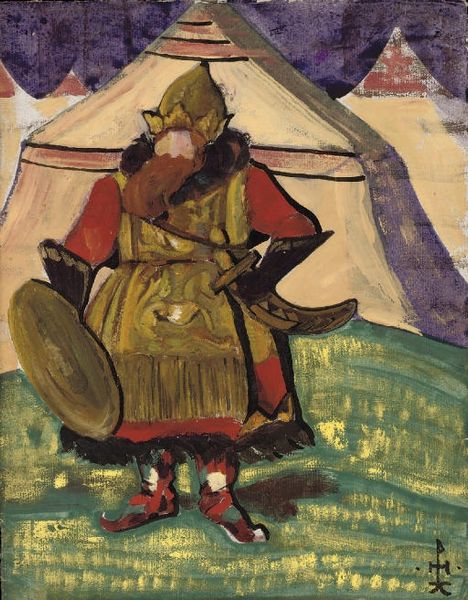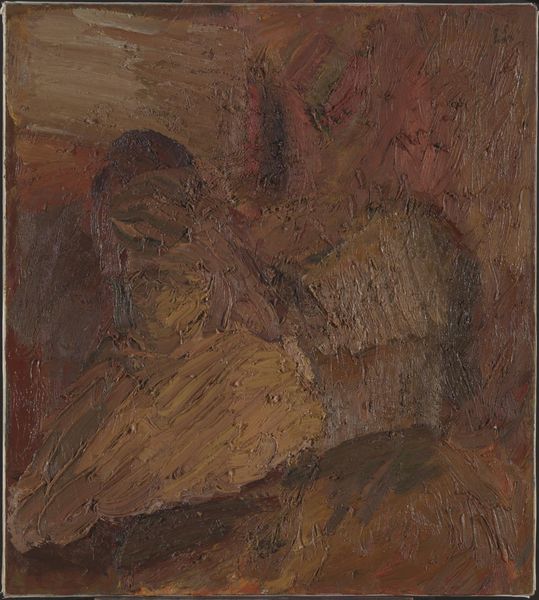
oil-paint
#
portrait
#
oil-paint
#
landscape
#
figuration
#
oil painting
#
expressionism
Copyright: Public Domain: Artvee
Curator: Here we have Christian Rohlfs’ “Moses Seeing the Promised Land,” an oil painting completed in 1912. It offers a somewhat unconventional depiction of this iconic biblical figure. Editor: My immediate sense is one of weariness, a poignant mix of anticipation and regret etched onto Moses’s face as he gazes at the landscape before him. Curator: Exactly. Rohlfs really captures that complexity. Moses, in his final moment of triumph, is also marked by the burden of knowing he won't enter the land himself. We see a very aged Moses, and his whiteness is of significance when contextualized in historical accounts. Editor: I think it also reveals something more broadly about the psychological weight of leadership, especially for marginalized communities navigating oppression and societal injustice. The figure isn’t only seeing his people's liberation but also recognizing the continued sacrifices required. Curator: The symbol of the promised land can then transcend a literal destination, instead functioning as a visualization of justice itself. The expressionistic style contributes to the emotive depth, amplifying Moses' internal struggle through distorted forms. Note how Rohlfs simplifies and almost primitivizes Moses's bodily features, and contrasts these features with a full, flowing white beard. Editor: That's true, and it echoes movements of its time looking back to classical figuration, where the symbolic potential of nature and simplified human forms communicated virtue. Yet there's a raw emotional honesty that diverges from classicism, a visceral quality achieved through Rohlfs’s application of paint. Look at those brushstrokes, they're so palpable you almost feel them! Curator: It is indeed the rough brushwork, the color palette dominated by earthy browns and that striking red cloak that contributes so much to its intense impact. It’s not just depicting a scene, but conveying an emotional state. Editor: The layering creates an effect like pentimento, and there is tension between Moses' red cloak, his skin tone, and the browns and beiges that characterize the terrain, hinting at a dynamic that’s both terrestrial and heavenly. Even today, it remains relevant as we look towards liberation movements and liberation theology. Curator: It truly highlights the emotional weight behind iconic stories that still influence our societies. The artist's skill renders it still relevant in our current landscape. Editor: This work prompts a valuable moment for self reflection as we see our own complex relationship to a desired future that remains always, agonizingly, within sight, yet often out of immediate reach.
Comments
No comments
Be the first to comment and join the conversation on the ultimate creative platform.


